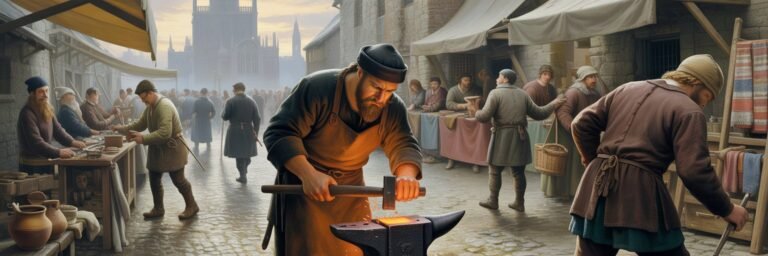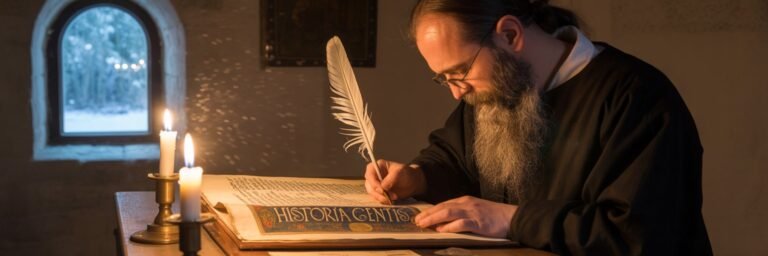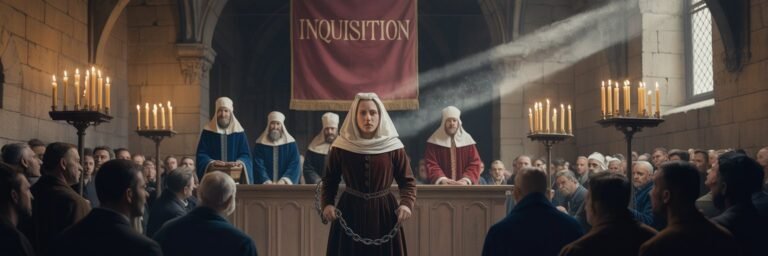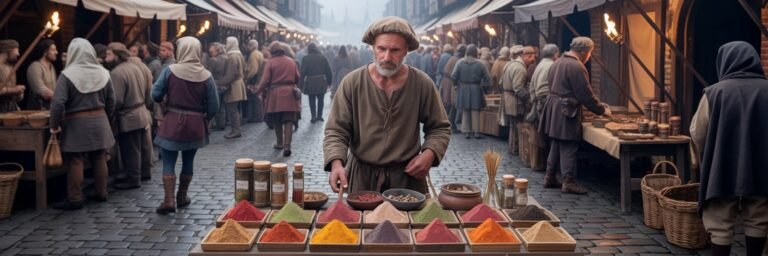INTRODUCTION
At sunset, nestled among formidable mountains and across expansive plains, the memories of medieval Europe stir, whispering tales of an era that spans from the 5th to the 15th century. This 1000-year period often seems remote, its relevance lost amid the mists of time. But the echoes of the past resonate in our present. To understand the world as it is today, it is crucial for us to fathom why and how history was shaped, in this case, by the Middle Ages in Europe, an epoch replete with monumental changes that influenced culture, politics, religion, and society in ways that still reverberate today.
HISTORICAL BACKGROUND
Tracing back the remnants of our past, Medieval Europe signifies the pivot between the fall of the Roman Empire and the flowering of the Renaissance. The tapestry of this era is a complex and subtle narrative intertwined with the rise of feudalism, the advent of powerful monarchies, the religious schism between East and West, known as the Great Schism, the institution of monasticism, and the spread of education and literacy. So began a dance of power, politics and passion that would shape the continent, and subsequently the world, in ways unimagined.
The Crusades mark a significant episode in this period, revealing a fusion of religious zeal and territorial ambition that swept kingdoms into distant lands in the name of faith. Equally transformative, the Black Death decimated the population, induced labor shortages, and incongruously paved the way for societal and economic shifts. Alongside these cataclysmic events, castles and cathedrals rose to the sky, art and literature flourished, while the magnetic compass and longship innovation spurred trade and exploration.
THEORIES AND INTERPRETATIONS
Several theories have been purposed by scholars to interpret the significance of Medieval Europe. The traditional interpretation, championed by historians like Charles Homer Haskins, celebrated a “Twelfth Century Renaissance.” Here, the Middle Ages birthed the societal and philosophical transformation that culminated in the Renaissance. Haskins’ views counter the notion of the ‘Dark Ages’, reflecting instead a period of enlightenment and progress with increased secular knowledge, bureaucratization of the Church, and substantial advancements in areas of law, governance, and technology.
Criticizing this overly positive reading, revisionist historians like Jacques Le Goff posited a ‘long Middle Ages’ theory, arguing that the Renaissance was not a clear-cut departure but rather an elongation of medieval culture lasting until the 18th century. This interpretation underlines the persistent hold Medieval Europe has on modernity.
MYSTERIES AND CONTROVERSIES
While a treasure of knowledge has been excavated from the Middle Ages, there yet remains a legion of mysteries and controversies that enshroud this era. One unique mystery is the secretive society of the Knights Templar, known for their military prowess during the Crusades and their mysterious rituals that have spurred countless conspiracy theories.
Controversy also extends to interpretations of religious practices in this period. Recently, some scholars like Henry Ansgar Kelly have challenged mainstream interpretations of the Church’s role in demonology and witchcraft, asserting that the Church was more defensive against those suppositions rather than proactive in their pursuit, as commonly accepted.
SYMBOLISM AND CULTURAL SIGNIFICANCE
Medieval Europe’s symbolism and cultural significance are imprinted deep within the fabric of the western world. Castles and cathedrals, beyond their circumstances of birth, have become symbols of heritage, invoking a sense of awe and curious intrigue. European languages today, from English to Italian, owe their roots to the linguistic transformations of the Middle Ages. The period’s rich tapestry yielded the courtly love tradition, the Arthurian myth, and Dante’s infernal journey that influenced literary traditions worldwide.
MODERN INVESTIGATIONS
Today’s historians and archaeologists use increasingly sophisticated methods to delve into Medieval Europe. The use of forensics and DNA analysis on skeletal remains clarifies facets of daily life and disease. Digital humanities offer possibilities to visualize medieval cityscapes or perform augmented reality on medieval art.
Professor Robert Bartlett, in his works, employs detailed archival studies to present a transformative image of the time and its impact on modern law, governance, and society. Through these investigations, the Middle Ages sheds its shroud revealing itself not as a static period but one of dynamic flux.
LEGACY AND CONCLUSION
Medieval Europe’s legacy continues to leave its indelible footprints in the paths of our modern world. We can trace the roots of our legal, political, and educational structures, to this distinct period. The concept of the nation-state, the ideological birthright of modern democracy, traces its genesis to medieval notions of territorial and political sovereignty. Universities, another institutional legacy of this era, are still unsurpassed as centers of learning.
The period was a crucible forging modern ideals of romantic love, chivalry, and individuality. From this era, Christianity spread its wings across the continent, lending Europe its distinct character.
In the ethereal sound of Gregorian chants or the raw reality presented in Boccaccio’s Decameron, in our modern passion for fantasy genre, or in the very design of our constitutions, you may find the Middle Ages. Far from being confined to the pages of history, the Middle Ages of Europe is enshrined in our society’s innate visions of order, beauty, and purpose. The ripples of this distant epoch play out not just on our scholarly stages but thrives and breathes within the very core of our contemporary life and culture.
In conclusion, medieval Europe matters: it has shaped us, lent us its echoes, and its resonance shall continue to be felt in the centuries that lie ahead. To study it is to study ourselves — our genesis, our transformations, and our age-long desire to create meaning out of the mundane and the magnificent.






